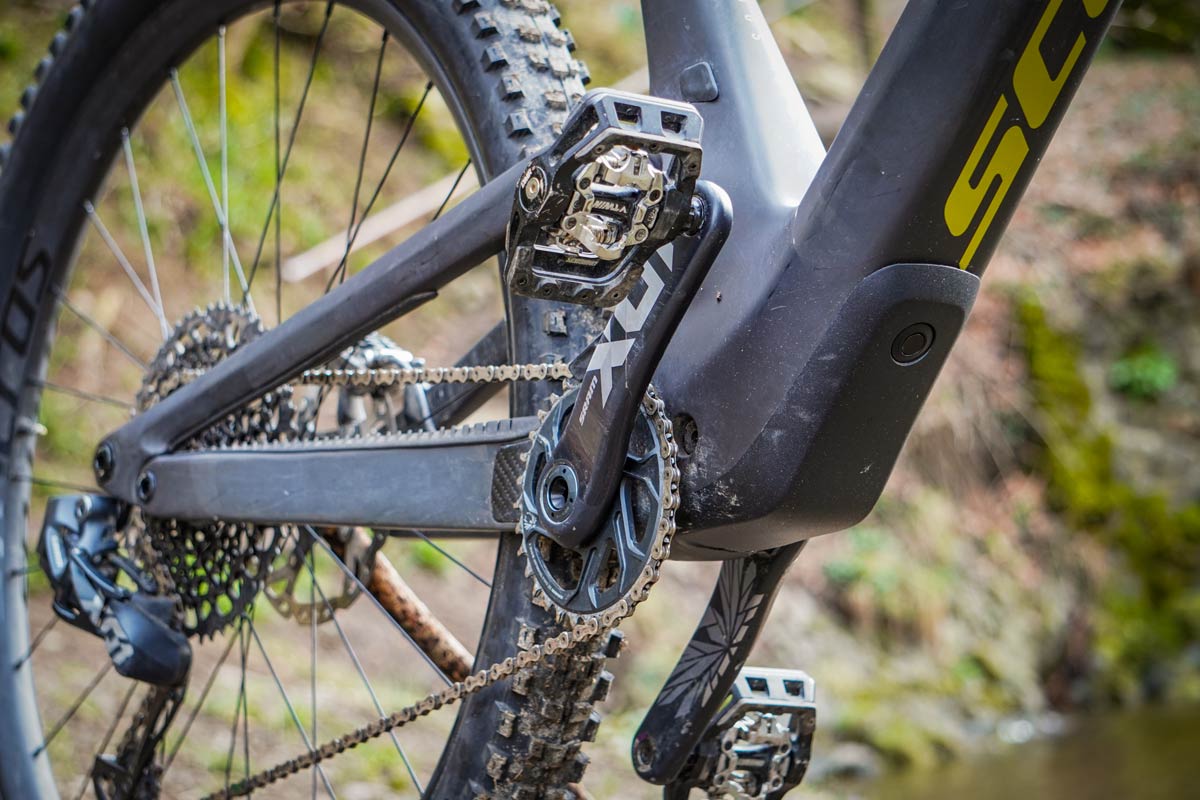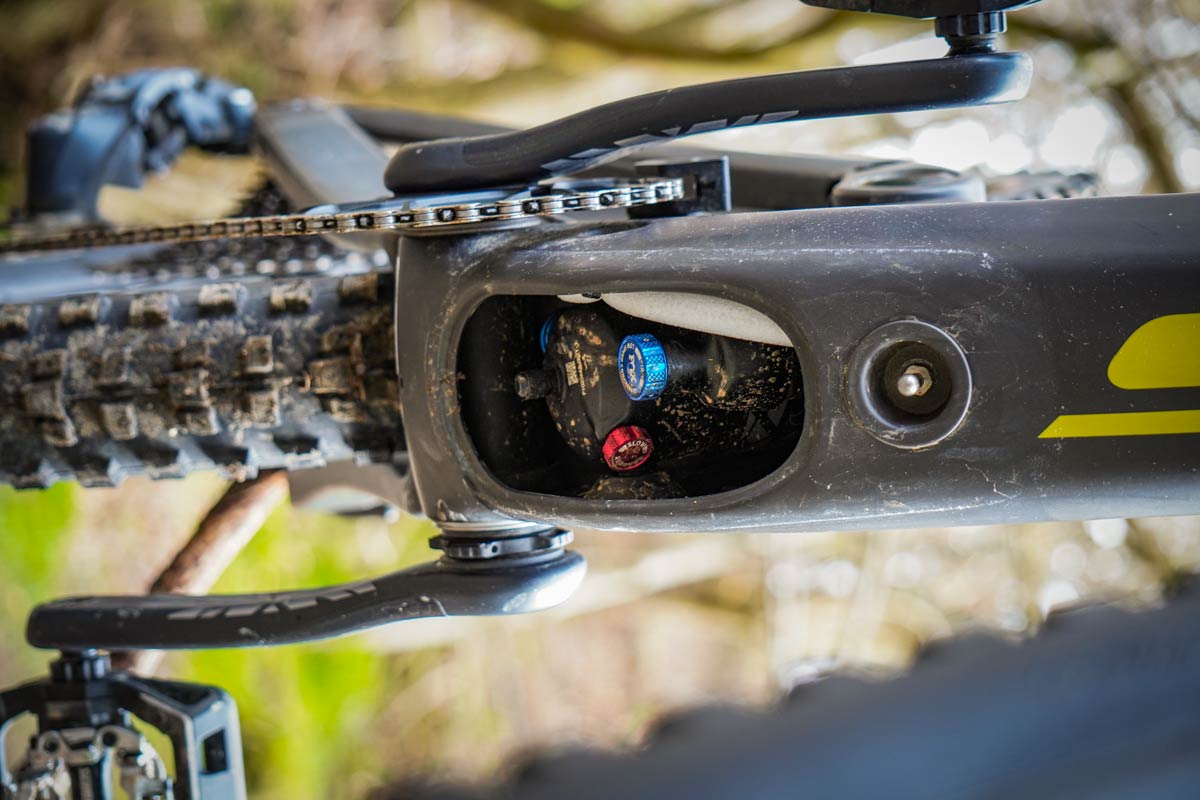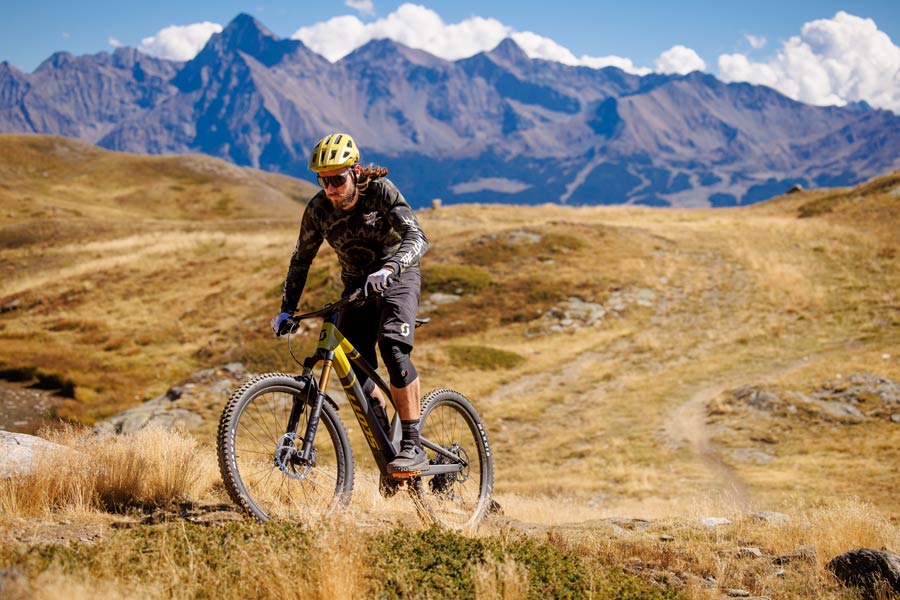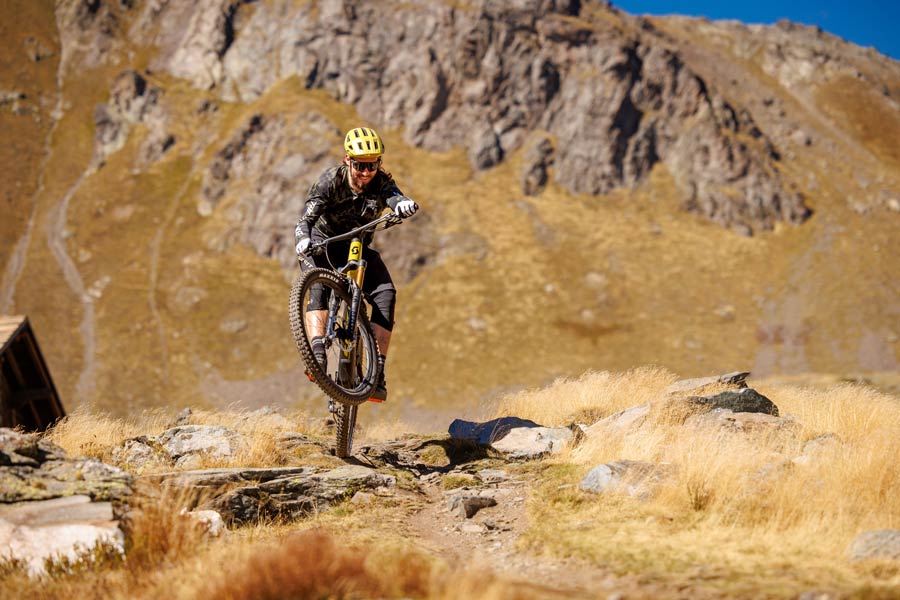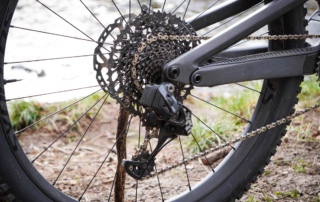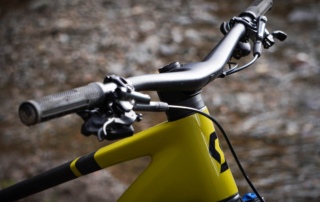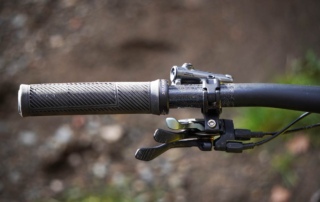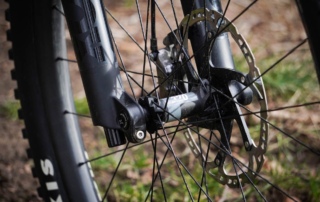Scott gave their Genius the same Integrated Shock Technology treatment as their Spark last year and threw in suspension and geometry updates to push their all mountain machine to the next level. Following their launch camp in Italy, we were supplied with the same Scott Genius ST 900 Tuned to put to the test over the long term in the Tweed Valley, Scotland, and really get to the bottom of how to get the most out of this unique looking bike. We think we’ve got it pretty well figured out by now, so let us tell you what we found.
QUICK HITS
• 29” Wheels
• 150mm Horst Link Suspension
• HTA 63.9
• STA 77.4 (effective)
• REACH 510 (XL)
Price: $3,799 / £3,799 (940) – $11,999 / £11,999 (900 Ultimate)
Website: Scott-sports.com
THE LAB
The Scott Genius has been the quintessential all mountain bike for quite some time now, sitting in that zone that unites the pedal-friendly trail bikes and rugged enduro bikes. With some spec and setup customization, Scott has always let the user choose what they want their Genius to be. The new Genius and Genius ST have followed suit, with Scott even going so far as to prepare each flavor of Genius – trail or light enduro – for the consumer, with the addition of the ST (super trail) models.
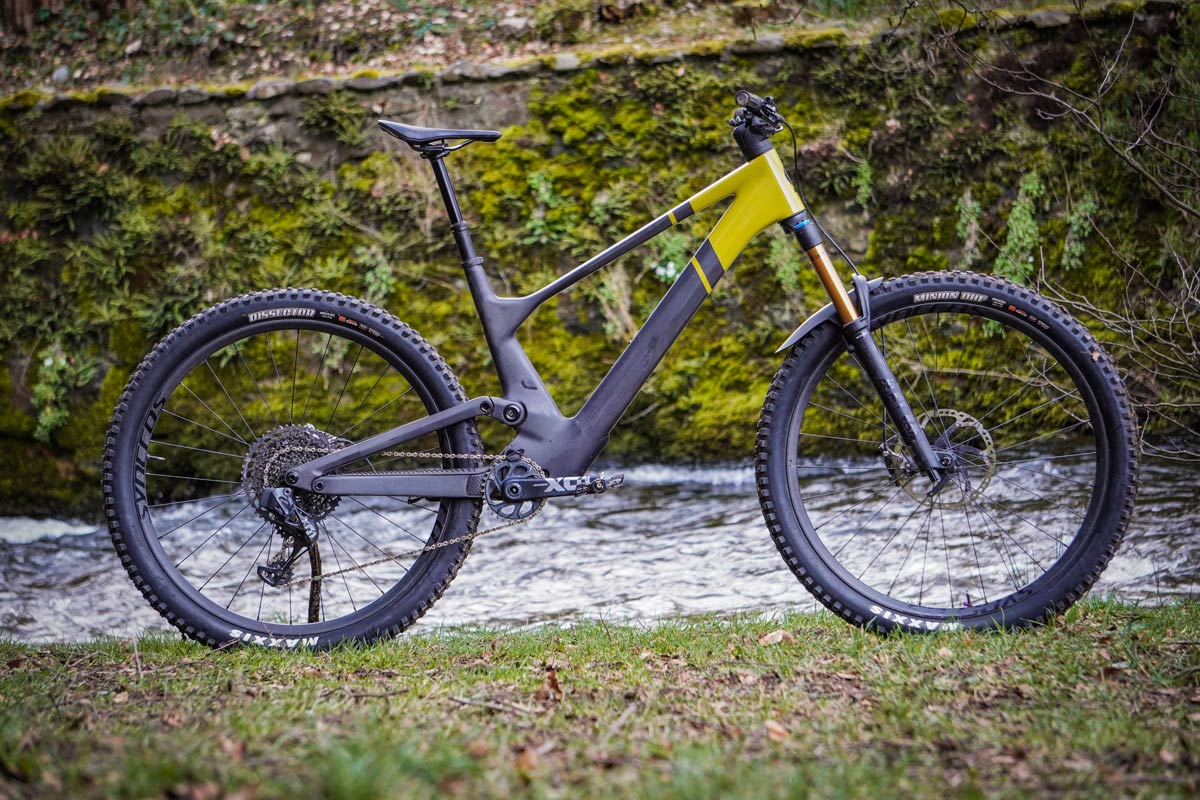
Frame | Regardless of the Scott Genius model you choose, you’ll receive a 150mm travel frame paired to a 160mm fork, and two 29” wheels. The frame is shared between the two versions, with Scott’s Integrated Suspension Technology (IST) that has the shock fully concealed within the frame. Though it may be hard to envisage what is happening as the bike is compressed, the suspension system is the common Horst Link design, with an internal rocker connected to the external upper link with a splined system, which drives the shock inside. Scott is not afraid to admit that a key benefit of their IST is its unique look, but it also carries performance benefits in the name of the protection of the shock from the elements; a lower center of gravity, and increased stiffness around the shock and bottom bracket. Shock access is made easy thanks to smart positioning of the adjustment dials, and a quick release hatch on the downtube.
The distinction between the Genius and Genius ST models comes in the form of their spec and what’s happening inside the shock that’s concealed within the frame, which use different takes of their NUDE Suspension Tech. The standard Genius has less burly spec all round; a Twinloc remote that simultaneously locks the fork and shock; and their unique NUDE shock featuring a “Descend” mode; a “Traction Control” mode that reduces shock air volume and adds some compression damping to both ends; and a “Lockout” mode that effectively locks out the fork and shock as you may have guessed. Both models feature an angle-adjustable headset, and Scott supplies the standard Genius in the steeper head angle setting to align with its trail focus.
The Genius ST (tested) is focused on delivering more aggressive performance for the descents, but is still absolutely a bike that’s intended to climb efficiently. Scott gives the Genius ST a Tracloc two-lever remote with an integrated separate dropper lever, which controls only the Fox Float X NUDE rear shock and leaves the user with full control over the adjustment dials on the fork. The shock has three similar but slightly different modes here, with the open “Descend” mode; “Ramp Control” mode with reduced air volume to increase shock progression; and “Climb” mode with increased compression damping and the reduced volume. This climb mode reduces the dynamic sag: increasing BB height for more pedal clearance; steepening the head angle for more climbing agility; and putting the rider in a section of the rear travel where there is more anti squat to further increase pedaling efficiency.
Suspension | The new Genius and Genius ST share the same frame and therefore the same kinematic, with roughly 21% progression through the shock stroke that increases in a linear fashion, which should make setup easier and give a more predictable response. The Tracloc system in the Fox Float X NUDE rear shock then increases the overall progression of the system in the Ramp Control and Climb modes thanks to the smaller shock air volume. Anti squat sits at around 110% in the climbing gears at 30% sag, increasing slightly throughout the cassette to offset the increased rider weight transfer forces in harder gears. With the reduced sag when selecting the Climb mode of the NUDE shock, Anti Squat increases to 115%-140% depending on the gear selected.
Frame Details | Scott designed their new Genius around a 55mm chainline, allowing a wider spacing on the lower linkage to increase stiffness as well as improving tire clearance. There are three different frames depending on the spec level selected, with the top-end HMX carbon on the 900 and ST 900; slightly heavier HMF carbon front and alloy rear on the 910, ST 910 and 920 (non-ST); and full high-quality alloy on the ST 920, 930 and 940. These frames all share the same details, and in Scott’s words give the “same experience at every price point”. There’s a splined link to connect the upper external and internal rockers, with a well engineered preload system that Scott is proud of. The linkage bearings are all high quality fully sealed units, with an extra level of sealing added to the exposed pivots. There’s a sag indicator on the upper link for easier setup; an integrated chain guide; rubber chainstay and seatstay protectors, and internal routing with guides in key locations to clamp the cables and prevent rattle.
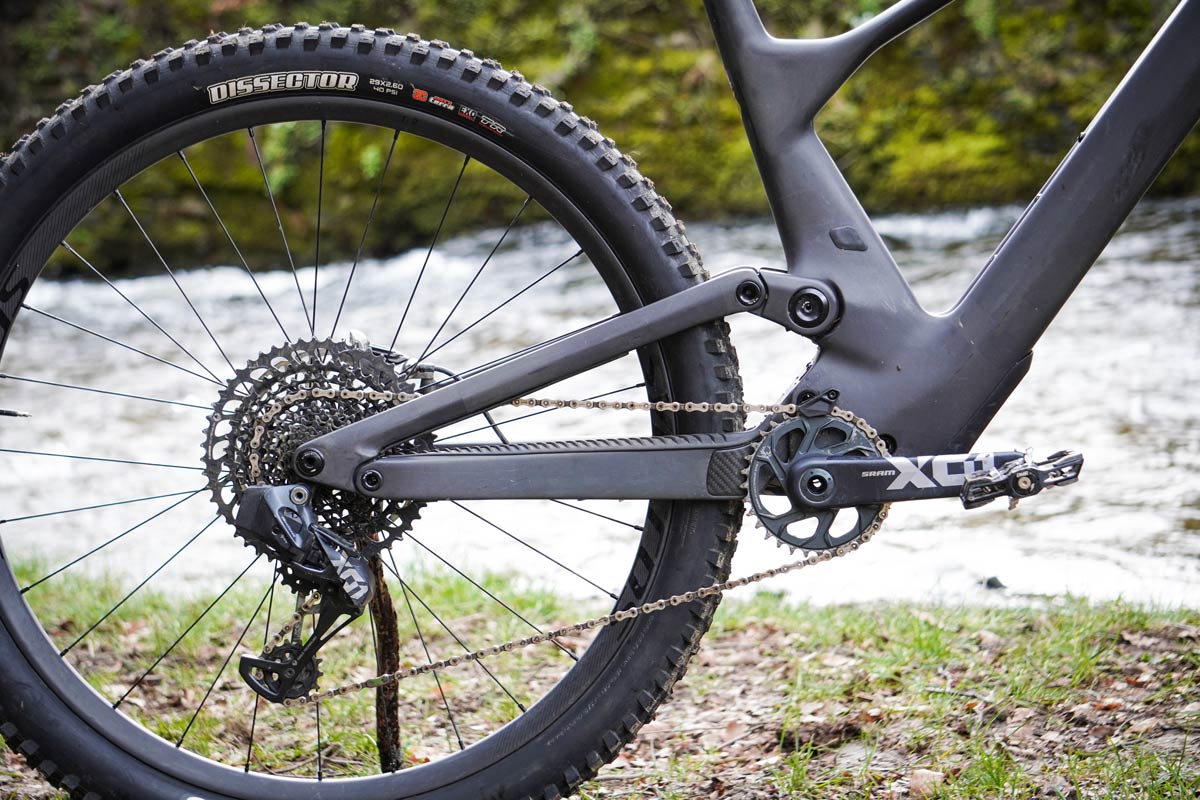
Geometry | Geometry figures on the Genius and Genius ST are consistent aside from the stock head angle – the standard Genius is provided in the steeper 65.1° headset setting, and the ST in the slacker 63.9° setting. Scott offers sizes S-XL in both, with reach figures going from 430mm to 510mm and stack heights from 617mm to a lofty 658mm. Effective seat tube angles steepen slightly as the size increases, from 76.7° on S to 77.4° on the XL. Consistent between all sizes are the 440mm rear end, and 33mm bb drop. The slack head angle and fairly long reach of the XL Genius ST gives a total wheelbase stretching to 1294mm.
Build Specs | The Genius is available in a wide range of spec levels as indicated in the previous paragraph, as well as “Contessa” versions with slight spec tweaks and different colors aimed at female riders. Pricing begins at $3,799 / £3,799 for the 940 and tops out at $11,999 /£11,999 for the top-spec 900 Ultimate. The Genius ST 900 Tuned tested is the top spec Genius ST, with an appropriately top-tier build and price tag of $10,999 / £10,999 that keeps the weight down to 30lbs for the XL size. A Fox 36 Float Factory fork with 160mm travel leads the way, with full control over the Grip 2 damper. The rear shock is the Fox Float X NUDE Factory, which has low speed compression and rebound adjustments in addition to the aforementioned Tracloc system control. The drivetrain is an all-SRAM affair, with their X01 Eagle AXS derailleur and carbon crank, a 10-52T X01 cassette; and GX AXS rocker wireless shifter. The brakes are Shimano’s XTR M9120 4-piston, which stop on 203mm front and 180mm rear rotors. Scott in-house components brand Syncros provides the majority of the other parts. Their Revelstoke 1.0 Carbon wheels are wrapped in a pair of 2.6” wide Maxxis tires in EXO casing, with a DHF up front and Dissector in the rear. The cockpit is an integrated bar/stem unit – the Syncros Hixon iC – which includes provisions to route the cables through the headset. This headset offers a ±0.6° head tube angle adjustment by rotating the cups within the frame, and to make maintenance easier, the spacers and headset components are split. The seatpost is the Syncros Duncan dropper, with 140mm to 200mm drop depending on the frame size, and is topped by a Syncros Tofino 1.5 saddle. Does the performance live up to the spec and price? Let’s talk about how it rides.
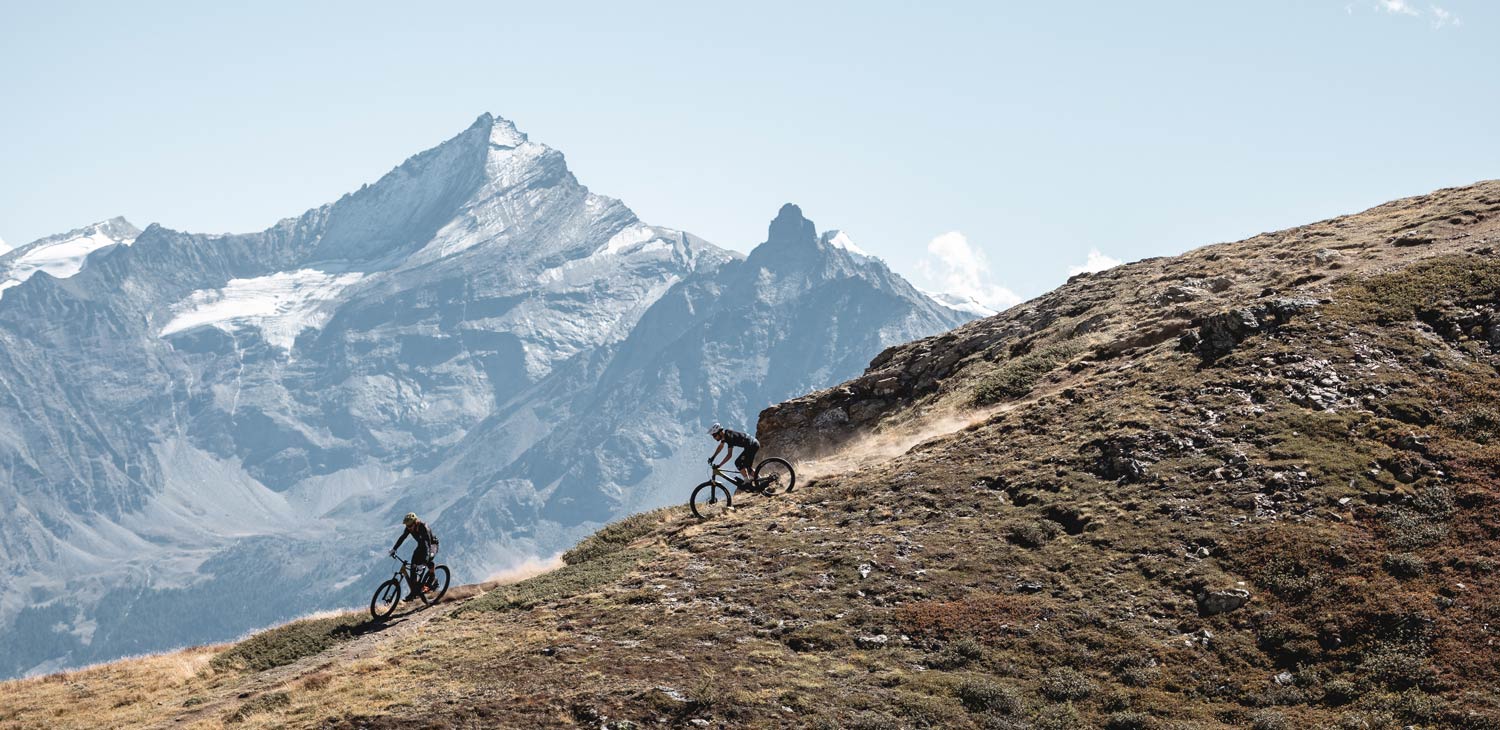
THE DIRT
Setup | Following on from an excellent couple of days putting the Scott Genius ST 900 Tuned to the test in Aosta, Italy, for its first ride review, I was provided with the same bike to test over the winter in the Tweed Valley, Scotland. I was excited to see if the theory I had developed following the first ride about how to unlock the ultimate in performance from the Genius ST would work out in practice, so I set about setting the rear end up with a generous 35% sag in the Descend mode. In my mind, this would allow me to obtain the most traction-rich and capable rear end for general trail to enduro descending and justify having that Tracloc Ramp Control setting to hand for the times I required some more support for flowier trails, as well as benefiting more from the Climb setting for the uphill or mid-descent sprints. As I’d discovered in the First Ride, when set up more conventionally, the rear end of the Genius in Descend mode was well behaved enough when pedaling and provided enough support when descending that I found the Tracloc system to effectively be obsolete.
My theory turned out to have real merit for riders looking for the most comfortable bike on the descents, and because the Tracloc remote is sufficiently ergonomic to allow for the modes to be cycled frequently after a slight adjustment period, there were no losses when it came to efficiency either. From time to time, I’d make use of the full 150mm travel in a manner that quickly reminded me of the fact that it was only a 150mm travel bike that sits in the middle of the progression spectrum, but aside from these moments, it added some extra capability and comfort to the Genius ST’s descending performance. Flowier sections of trail, from smoother singletrack to bikepark style jumps and turns were well catered for with the Ramp Control setting, offering increased support for pumping efforts and a generally more sporty feel, but harsher landings transmitted some more energy through my feet than when leaving the rear end open. The climbing mode is not a full lockout, but a usable increase in compression damping that makes the rear end sit higher and reduces the bob when pedaling without making it unmanageably harsh over mildly rough terrain or totally removing the ability of the rear end to find traction.
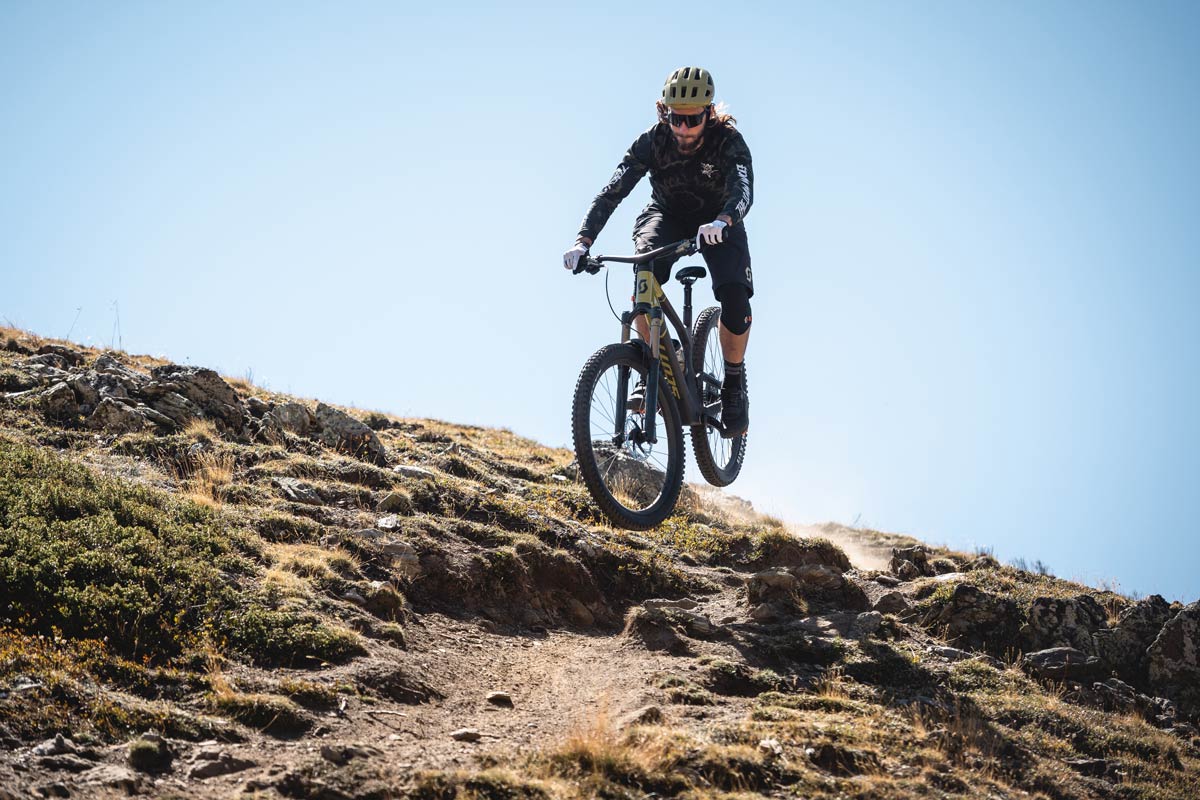
Climbing | I was given the same XL size Genius to test in the Tweed Valley as I had tested in Aosta, which was a bit of a shame for me – my preferred reach generally tops out in the 490mm zone, so the Genius ST’s 510mm reach reduced the agility in the most dynamic riding situations and left me feeling slightly more like a passenger. It’s safe to say that I would have been more comfortable on the size Large, but the climbing position on the XL was still acceptable thanks to its relatively steep seat tube angle and the high stack. When combined with the 25mm rise and tower of spacers under the integrated cockpit, I thankfully wasn’t overly stretched when seated. The climb mode of the Tracloc system makes a notable difference to the dynamic geometry of the bike, giving more pedal clearance to clear obstacles as well as reducing the turning radius for the tighter uphill switchbacks. This makes an otherwise stable and stretched bike much more “trail-like” on the way up.
Descending | Regardless of if you subscribe to my sag-heavy setup philosophy or keep it more normal, the Genius is a competent descender and only really taps out in the roughest and chunkiest terrain. Stability is rarely an issue with its low BB and fairly slack head angle, and the frame and wheelset are stout enough that it’s the tire spec that’ll limit you first, followed by the rear suspension much further down the path of gnar. Once I had swapped the EXO casing 2.6” tires out for a slight narrower and burlier spec, it was easy to forget that the Genius is not a bike intended to be an enduro racer, as there’s ample capability there to ride it like one, especially in my preferred sag-heavy guise. The front end is commanding with a stiff and direct front wheel and stiff integrated cockpit, but not the most comfortable, which leads me to think that the voluminous tire spec is a bid to regain some comfort and traction. The drawback of the bulbous EXO tires though is their inability to retain their structure when pushing hard, unless overinflated, which had me going in circles trying to find a setup that would satisfy all desired performance metrics. Tire clearance also suffered in the rear end, where stones would occasionally get fired out after being dragged in by the tire, and mud would build up quickly in the typical claggy Scottish slop.
The solution that let me unlock the sweet spot of performance on the Scott turned out to be a replacement of the front wheel for a more compliant alternative, and fitment of a tire pairing with a slightly narrower 2.4” width and sturdier casing. If you’re a lighter rider, or aren’t demanding quite so much from the Genius in terms of stability under harsh compressions, then the stock tire combo at suitably low pressures will make much more sense and will span a wide range of conditions. For the drier days and less aggressive rides, I had a lighter and faster rolling tire set to hand that quickly turned it into a more trail-friendly machine, and that versatility is the real jewel in the Genius ST’s armor. It’s clearly well engineered, and the smart premium component package allows it to be impressively light and sturdy in equal measures.
Spec Notes | The integrated Syncros carbon cockpit will not be to everyone’s liking and is certainly not the most comfortable and compliant setup out there, but I didn’t hate it. The angles were fairly comfortable for me, feeling less like they’ve been rolled forwards than most others I’ve tried, and the looks match the super clean and futuristic aesthetic of the rest of the bike. The headset routing is fairly well executed, with split spacers making maintenance a little easier. The cables are not fully guided within the frame, but clamped at sensible points that limited the amount of noise produced to an acceptable level. I managed to break one of the downtube covers when a loose rock bounced up off the trail and caught the edge of it. Thankfully it did its job and protected the frame, and a replacement quickly resolved the issue. It’s not well sealed to the frame, and would likely benefit from a rubber seal around the edge to keep water and mud out of the frame better when riding and especially when washing. I’d regularly end up with a large puddle on the floor after storing the bike upright following washing. It didn’t cause any issues with frame bearings or corroded hardware over a few months of testing in the muddiest and wettest conditions, but it’s worth noting.
Other than the tire spec, the Genius ST 900 Tuned has a build list that I struggle to fault in any way. From the brakes, to the drivetrain and a surprisingly sturdy (if a little too stiff) wheelset, there’s nothing I’d be running out to change after taking delivery. You’d hope so with that price tag though, which is very hard to stomach. Regardless of the spec and high quality of the bike, I’d be hard pressed to tell someone to spend that amount of money on an analogue machine. Thankfully the cheaper models are likely to offer a very close performance level, and that Genius ST 920 looks like a solid build for the money.
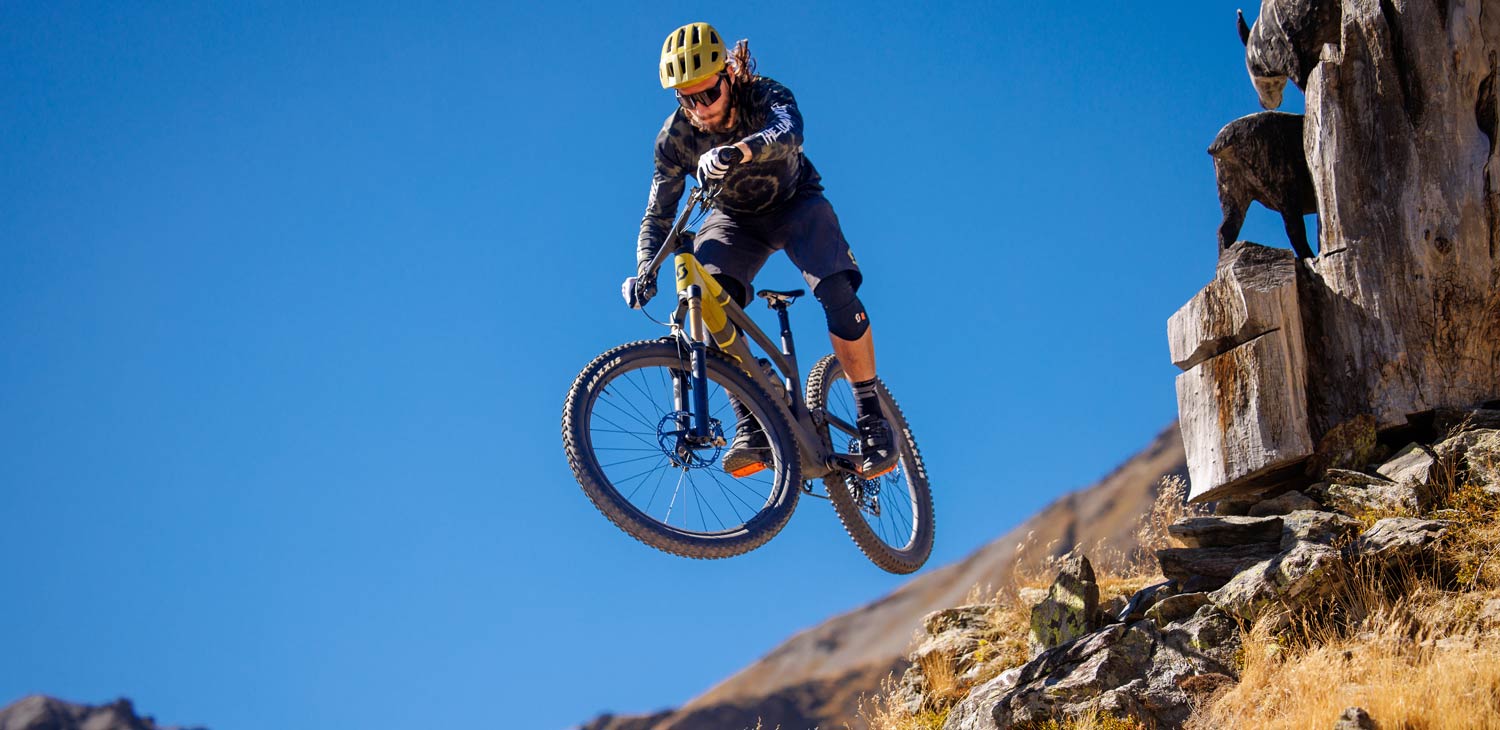
The Wolf’s Last Word
Overall the Scott Genius ST 900 Tuned was a very pleasant machine to test, with stand-out versatility that would make it a strong contender for the ultimate all rounder trail to enduro bike. That said, it was a jack of all trades and not necessarily a master of any, but for many riders that’s likely to be a benefit. Stick a set of fast rolling tires on it and setup sag to a normal 28-30% level and you’ve got yourself a competent trail machine, and the next day bump the tire spec up to something burlier and run a touch more sag for a bike that’ll happily hang with the enduro crowd, making the Tracloc system worth having. ![]()
Price: $10,999 / £10,999
Weight: 30lbs / 13.6kg (XL)
Website: Scott-sports.com
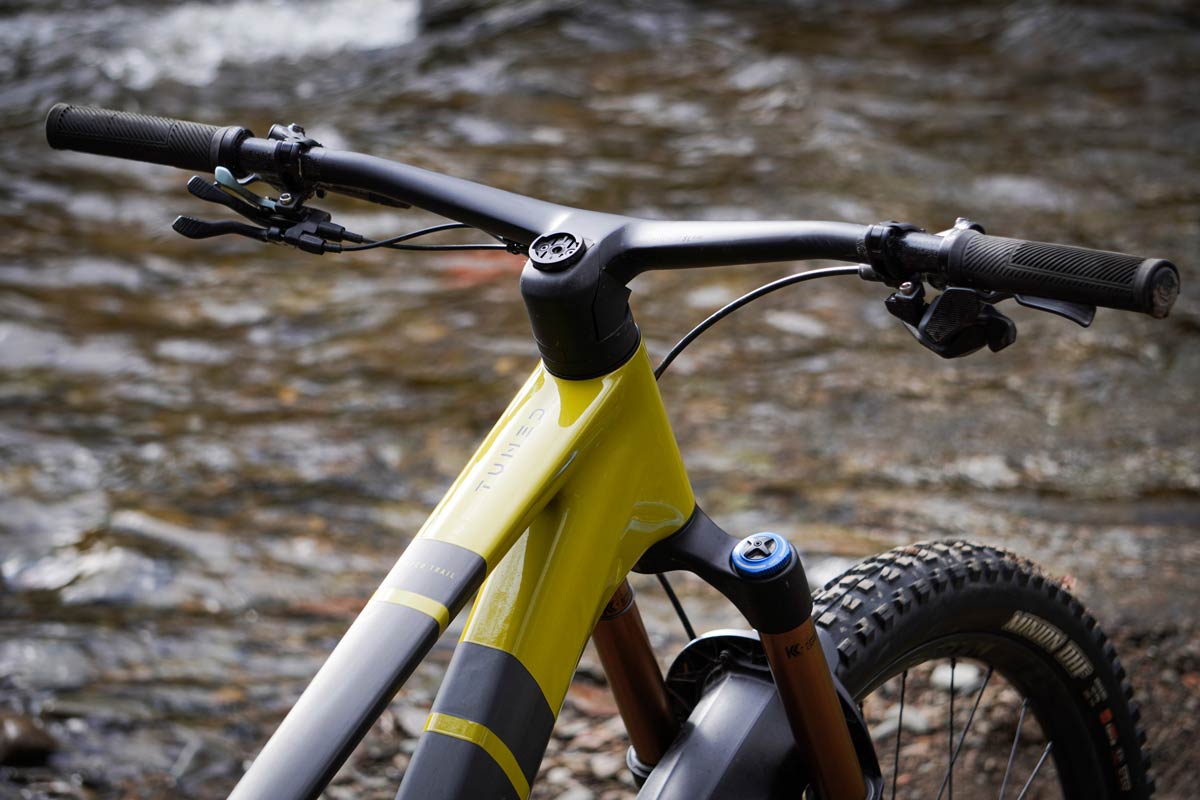
SPECIFICATIONS
CHASSIS
Frame: Genius Carbon HMX | 150mm
Fork: Fox 36 Factory Grip2 | 160mm
Shock: Fox Float X NUDE Factory EVOL Piggy Back | Trunnion 185x55mm
COCKPIT
Brakes: Shimano XTR M9120 (200/180 mm)
Cockpit: Syncros Hixon iC Carbon bar/stem | 780mm Width | 40mm long | S/M: 15mm rise; L/XL: 25mm rise
Headset: Syncros-Acros Angle adjust ± 0.6° | Cable Routing
Seatpost: Syncros Duncan Dropper | S: 140mm, M: 160mm, L: 170mm, XL: 200mm
Saddle: Syncros Tofino 1.5
WHEELS
Wheelset: Syncros Revelstoke 1.0 Carbon | SRAM TyreWiz
Front Tire: Maxxis Minion DHF | Maxxterra | EXO | 29×2.6″
Rear Tire: Maxxis Dissector Maxxterra | EXO | 29×2.6″
DRIVETRAIN
Bottom Bracket: SRAM Dub PF 92
Cranks: SRAM X01 DUB Eagle Carbon | 170mm | 32T
Shifter: SRAM GX Eagle AXS Rocker | 12spd
Derailleur: SRAM X01 Eagle AXS | 12spd
Cassette: SRAM X01 XG1295 | 12spd | 10-52 T
We Dig
Versatility
Tracloc remote benefits with considered setup
Killer spec
Impressively light
We Don’t
Hefty price tag
2.6” exo tires
Tracloc is only useful when setup accordingly
LEAVE A COMMENT | WIN FREE STUFF
Want to win some free schwag? Leave a comment and vote up the most thoughtful comments and each month we’ll pick a winner. The person with the smartest and most helpful replies will earn some sweet new gear. Join the Pack and get the latest news and read the latest reviews on the top mountain and electric mountain bikes.

